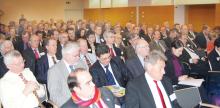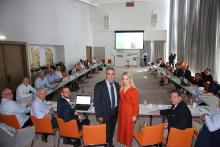
Europe is starting to look closer to home for essential raw materials as globalisation creates fierce competition for non-energy commodities. Robert Camp looks at the issues and opportunities
By the end of this year the
Fundamentally, the European Commission views lack of access to raw materials as a threat to the competitiveness of European industry.
EU companies, especially those in the telecoms, aerospace and other high-tech sectors like renewable energy, have seen China and India turn to Africa and Latin America to tap some of the world's largest reserves of precious minerals and metals. China, for example, accounted for more than 50% of the growth in world consumption of industrial metals between 2002 and 2005, contributing to a tripling in metal prices between 2002 and 2008.
The argument is that non-energy raw materials are an essential part of both hitech products and everyday consumer goods like cars, computers and mobile phones. In the 1980s for example, computer chips were made on the basis of 12 minerals, whereas nowadays more than 60 different minerals may be used.
For many essential raw materials, extraction is concentrated in a limited number of countries. China produces 95% of all rare earth concentrates (needed for hand-held consumer electronics, LCD's, high performance magnets); Brazil produces 90% of all niobium (needed for steel alloys in gas pipelines and super alloys in high performance jet aircraft) and South Africa produces 79% of all rhodium (needed for catalytic converters in cars).
Furthermore, the Commission points out those important raw materials sources are increasingly located in parts of the world which lack political and economic stability. Therefore European industry needs fair access to raw materials - both from within and outside the EU - in order to maintain its competitive position.
The problem is that on the one hand the EU is highly dependent on imports of economically important raw materials which are increasingly affected by market distortions. But on the other hand, exploration and extraction are facing increased competition for different land uses and a highly regulated environment within the EU.
In attempting to square that circle the Commission has come up with the European Strategy on Non-Energy Raw Materials. This has three central pillars including better and undistorted access to raw materials on world markets and reducing the EU's consumption of raw materials by increasing resource efficiency and recycling.
But by far the most interesting proposal from the aggregates industry's perspective is improved conditions for raw materials extraction within Europe, including the potential to open up mining areas which have hitherto been protected under EU conservation law.
That's not to say that the Commission is proposing a charter to destroy the environment - far from it. What it has called for is an improved regulatory framework for accessing land by promoting best practice in the areas of land use planning, exploration and extraction.
And the Commission wants to develop guidelines that provide clarity on how to reconcile extraction activities in or near Natura 2000 areas with environmental protection. Natura 2000 areas now cover 20% of the EU territory but there are a number of examples across Europe where sustainable development has been achieved in or near such areas.
Also of interest to the quarrying sector is the Commission's call for better networking between national geological surveys with the aim of increasing the EU's knowledge of minerals deposits. It wants to see the promotion of skills and focused research on innovative exploration and extraction technologies, recycling, materials substitution and resource efficiency.
This will be a hugely important document for the EU's non-energy extractive industries, which turnover more than €40 billion, employ more than 250,000 people and make a major contribution to downstream sectors including construction minerals, industrial minerals and metallic ores.









